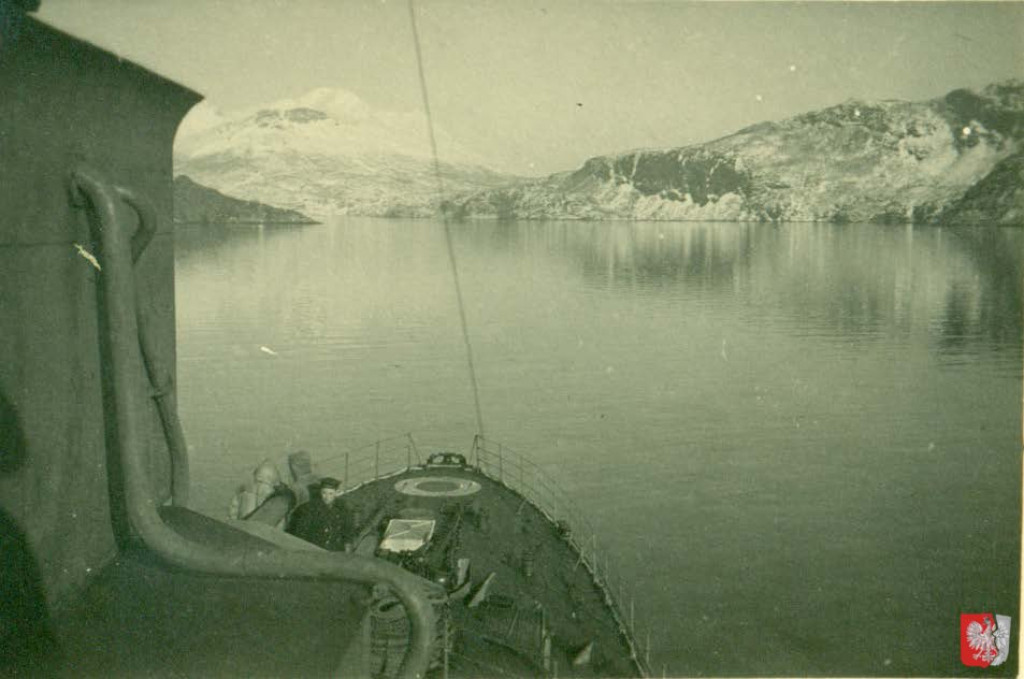The Norwegian CampaignOn 4th April 1940 the 1st Destroyer Flotilla, containing the three Polish destroyers, was ordered to Scapa Flow to take part in the Norwegian campaign – the Germans having just invaded that neutral country. At first the Polish vessels operated between Narvik and the Lofoten Islands. On May 3rd the Burza landed French Alpine troops at Lofoten. The Poles then gave artillery support to the ground troops. By now Commander Nahorski was captain of the Błyskawica, Commander Hulewicz of Grom, and Commander Francki captain of Burza.Throughout the campaign Allied vessels were subject to regular air attack. Grom had been operating in the Narvik area since 22nd April, destroying many German artillery batteries, machine gun nests, bridges, railways and tunnels. The enemy called her “Der Menschenjager” – man hunter. Early in the morning of 4th May however Grom was subject to a concerted aerial attack and was struck by two out of six bombs dropped from a height of about 16,750 feet. A torpedo launcher was struck and the torpedo exploded, causing the hull to break into two parts and the ship to sink almost immediately with a loss of life of 59 sailors. Frank Grams, a petty officer gunner, remembered how his vessel was completely cut in two. He was to remain in the cold water for two hours as the Germans on the shore machine gunned the survivors in the water.RN officer Cdr. Sir Peter Agnew recalled the sinking of ORP Grom:‘She sank in less than 5 minutes. We were only 3 cables away, and could see many men swimming for it before our two boats could reach them. When they were full there were many still in the water, and the last was a man with a dog alongside him. A few minutes later the first Poles to arrive on board of Bedouin told me that it was the captain, and that he was shouting in Polish that if his dog could not make it neither would he. Both were saved…’.
Published in the Polish Naval Association newsletter, 1979
The following day Błyskawica took Grom’s place in the fjord and for the next six days suffered heavy air attack and also shelling from the shore batteries. Destroyers in the narrow fjords had to often hide inshore protected from bombing and shore based shelling by overhanging rocks and by the frequent mists of early spring.
Description of Captain Nahorski and the arduous nature of the Narvik campaign:
‘We had some hard days. The ship had to zig-zag and twist like an eel, slowing down and then speeding ahead to make the bomber’s aim more difficult. The skipper, Nahorski, a fine fellow, worked more than all the rest put together. He was at the helm himself. He spun the wheel one way and then the other working like a devil. The mountains were still covered in snow, the water was like ice and he was there in shirt shirt sleeves sweating like a stoker. It lasted for hours – a whole day. He started at eight in the morning and didn’t take his hands off the wheel until five’.
Pruszynski ‘Poland fights back’ London, 1941
In addition to attack from above and shelling from shore batteries small arms fire could often endanger lives on deck. Commander Nahorski, on his open bridge, was saved from a bullet by his cigarette case. The family still have this poignant, dented, memento.











